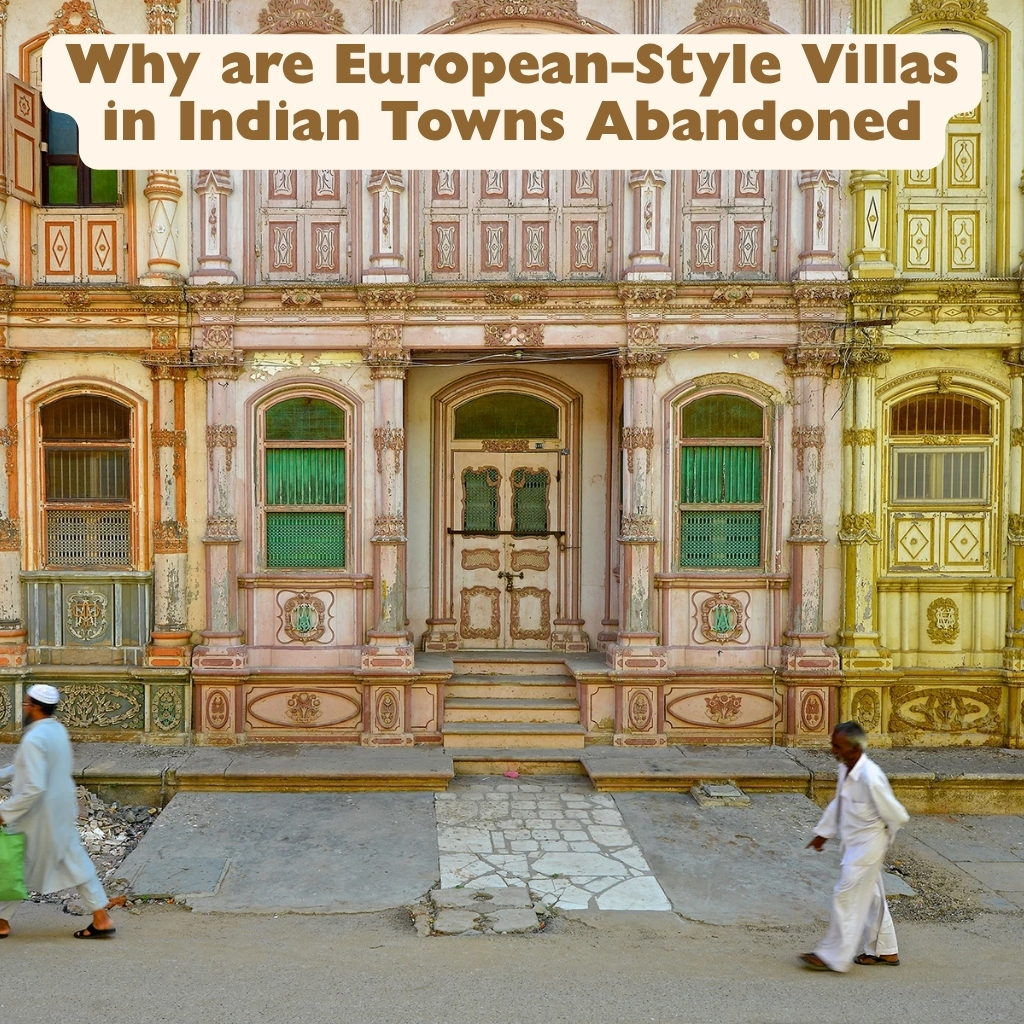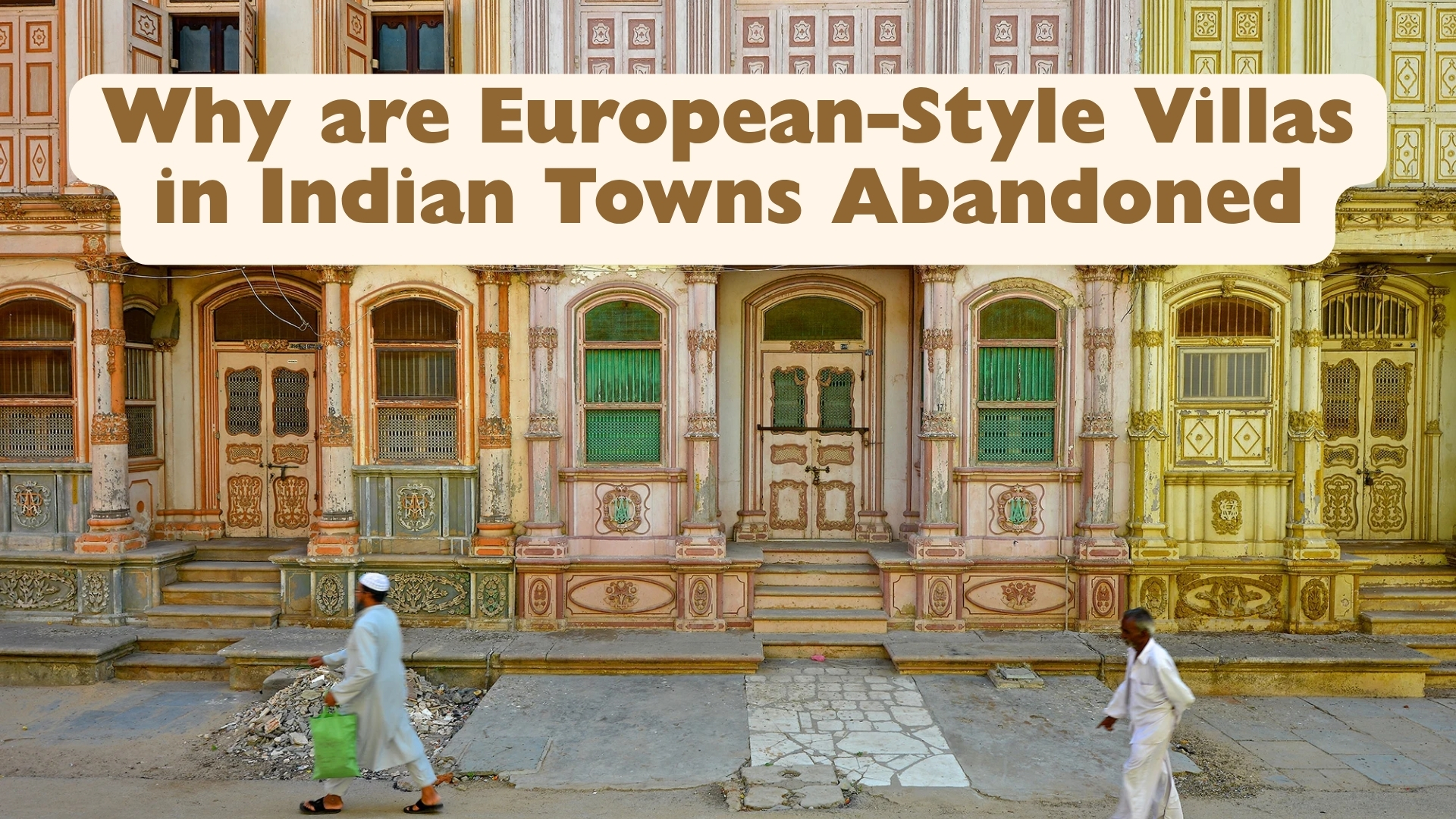Across many Indian towns, especially those with colonial histories, you’ll find grand European-style villas—once the pride of the region—now standing eerily quiet, their facades weathered and gardens overgrown. These abandoned mansions, with their ornate balconies, high ceilings, and sprawling lawns, tell stories of a bygone era. But why are these beautiful European-style villas in Indian towns abandoned? What factors led to their decline, and what does their future look like?
In this article, we’ll delve deep into the fascinating history of these villas, the socio-economic and cultural shifts that led to their abandonment, and the ongoing efforts (or lack thereof) to preserve them. Whether you’re a history buff, an architecture enthusiast, or simply curious about India’s changing urban landscape, this comprehensive guide will provide valuable insights into the fate of these forgotten homes.
The Rise and Fall of European-Style Villas in India


The Colonial Legacy: How European-Style Villas Came to India
During the British colonial period (mid-18th to mid-20th century), European powers such as the British, French, Portuguese, and Dutch established settlements across India. To recreate a sense of home and display their power, colonial officials, merchants, and wealthy Indian elites built villas in European architectural styles—Georgian, Victorian, Indo-Saracenic, and Art Deco, among others.
Key Features of European-Style Villas in India
- High ceilings and large windows for ventilation and light
- Verandas and porticos for social gatherings
- Ornate facades with columns, arches, and decorative moldings
- Sprawling gardens and driveways
- Imported materials such as Italian marble, Belgian glass, and Burmese teak
These villas became symbols of prestige, blending European aesthetics with local craftsmanship.
Post-Independence Transition: Changing Ownership and Purpose
After India gained independence in 1947, many European owners left the country. Their properties were often sold, inherited, or taken over by the government. The new Indian owners, sometimes lacking the resources or interest to maintain such large estates, faced challenges:
- High maintenance costs due to aging structures and imported materials
- Changing family structures, with joint families splitting into nuclear units
- Urbanization and land value appreciation, making the land more valuable than the villa itself
Socio-Economic Shifts: Why Villas Were Abandoned
1. High Maintenance and Restoration Costs
European-style villas were built with materials and techniques not always available locally. As these buildings aged, the cost of repairs soared. Many owners found it financially unviable to restore or even maintain these properties.
2. Inheritance Disputes and Fragmentation
Large villas were often inherited by multiple descendants, leading to disputes or division of property. In some cases, the property remained locked in legal battles for decades, resulting in neglect and abandonment.
3. Urbanization and Real Estate Development
As Indian towns expanded, the land occupied by these villas became prime real estate. Developers offered lucrative deals to owners, who sometimes sold the land for apartment complexes or commercial buildings, leaving the villas to deteriorate until demolition.
4. Changing Lifestyles and Preferences
Modern families preferred compact, low-maintenance homes with contemporary amenities. The sprawling layouts and old-fashioned designs of European villas no longer suited urban lifestyles.
5. Government Acquisition and Neglect
Some villas were acquired by government agencies for public use (offices, guesthouses, schools) but were later abandoned due to lack of funds or shifting priorities.
Comparing the Fate of European-Style Villas Across Indian Towns
| Aspect | Well-Preserved Villas | Abandoned Villas |
|---|---|---|
| Location | Tourist hotspots, major cities | Smaller towns, outskirts |
| Ownership | Private (wealthy families), heritage trusts | Multiple heirs, government, absentee owners |
| Maintenance | Regular upkeep, restoration | Neglected, decaying |
| Current Use | Boutique hotels, museums, residences | Vacant, encroached, derelict |
| Heritage Status | Protected monuments | Unprotected, at risk |
Case Studies: Notable Abandoned European-Style Villas
1. Chettinad Mansions, Tamil Nadu
Once thriving homes of wealthy traders, many Chettinad mansions—blending European and Indian styles—now stand empty due to migration and high upkeep costs.
2. French Villas in Puducherry
While some have been converted into hotels or cafes, several French-era villas in the White Town area are abandoned, awaiting restoration or redevelopment.
3. Portuguese Villas in Goa
Many Goan villas, especially in villages, are abandoned as families move abroad, leaving ancestral homes to decay.
The Cultural and Emotional Impact
Abandoned European-style villas are more than just empty buildings—they are repositories of memories, culture, and history. Their decline often evokes a sense of loss among local communities, who see them as symbols of a shared past.
Loss of Heritage
- Architectural diversity is diminished as unique structures are lost.
- Local crafts and materials used in these villas become obsolete.
- Historical narratives tied to these homes fade away.
Emotional Disconnect
Younger generations, with little attachment to ancestral homes, may not see the value in preserving them, further accelerating abandonment.
Efforts to Preserve and Reuse European-Style Villas
Heritage Conservation Initiatives
Some NGOs, heritage trusts, and government agencies have recognized the value of these villas and are working to:
- Document and list heritage properties
- Offer grants and tax incentives for restoration
- Promote adaptive reuse (converting villas into hotels, museums, or cultural centers)
Successful Examples
- Neemrana Hotels: Revived several heritage properties across India, turning abandoned villas into luxury hotels.
- INTACH (Indian National Trust for Art and Cultural Heritage): Works with local communities to restore and maintain heritage buildings.
Challenges in Conservation
- Lack of awareness among owners and authorities
- Limited funding for restoration projects
- Legal hurdles in property ownership and usage
FAQ
Why are so many European-style villas in Indian towns abandoned?
Multiple factors contribute, including high maintenance costs, inheritance disputes, urbanization, changing lifestyles, and lack of government support for heritage conservation.
Can these villas be restored and reused?
Yes, many abandoned villas can be restored, but it requires significant investment, expertise, and a viable plan for adaptive reuse (such as converting them into hotels or museums).
Are there any government policies to protect these villas?
Some states have heritage laws and offer incentives for restoration, but enforcement is inconsistent and many villas lack official protection.
What happens to the land when a villa is abandoned?
Often, the land becomes a target for real estate development. In some cases, the villa is demolished to make way for apartments or commercial buildings.
How can individuals help preserve these villas?
Raising awareness, supporting heritage organizations, and advocating for stronger heritage protection laws can make a difference.
Conclusion: The Future of European-Style Villas in Indian Towns
European-style villas in Indian towns are silent witnesses to a complex history of colonialism, migration, and modernization. Their abandonment is a reflection of changing times—shifting family structures, economic priorities, and urban landscapes. While some have found new life as boutique hotels or cultural centers, many more languish in neglect, at risk of being lost forever.
Key Takeaways
- The abandonment of European-style villas is driven by a mix of economic, social, and cultural factors.
- Preserving these villas requires coordinated efforts from owners, communities, and authorities.
- Adaptive reuse offers a sustainable path to saving these architectural gems.
If you live near an abandoned villa or care about heritage conservation, consider getting involved—your voice can help ensure these beautiful homes are not forgotten.